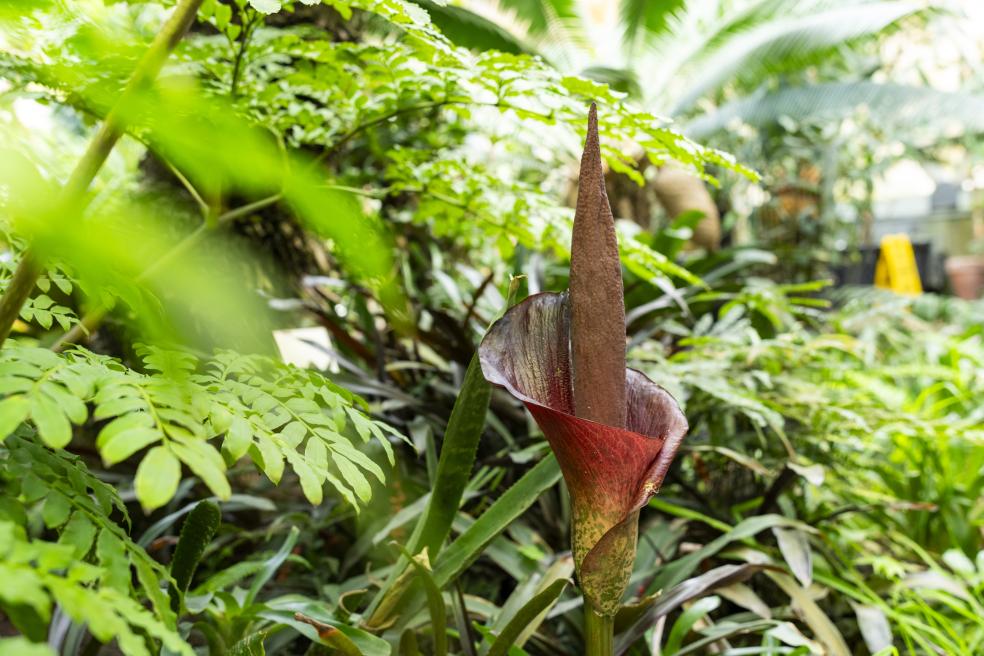
The plant blooms only once a year on average, bearing witness to the opening of the corpse flower is special and only lasts for a few days. The last time it bloomed was in 2021.
“This plant requires specific and consistent environmental conditions to flower, which can happen every year around early spring in the campus greenhouse,” says Brianne Lee, Cal Poly Humboldt’s greenhouse manager.
The corpse flower is not a single flower but an inflorescence, which is a stalk of many flowers. The plant can grow to 36 inches wide, with the inflorescence growing up to 72 inches. It is native to warm subtropical to tropical areas of eastern Asia and is commonly grown in research greenhouses.
When the plant blooms, it emits a feral, decaying odor similar to rotting flesh. This odor, along with the royal burgundy color and elevated body-like temperature of 98 degrees, serves the biological function of imitating a dead animal to attract pollinators such as dung beetles, carrion flies, and other scavenger insects. These pollinators are attracted to the odor and color and help in the pollination process.
The Dennis K. Walker Greenhouse is open Tuesday through Friday from 10 a.m. to 2 p.m.